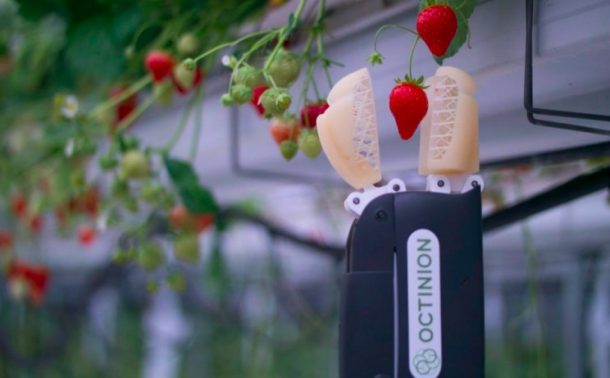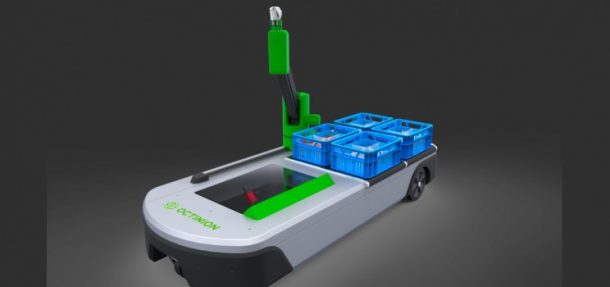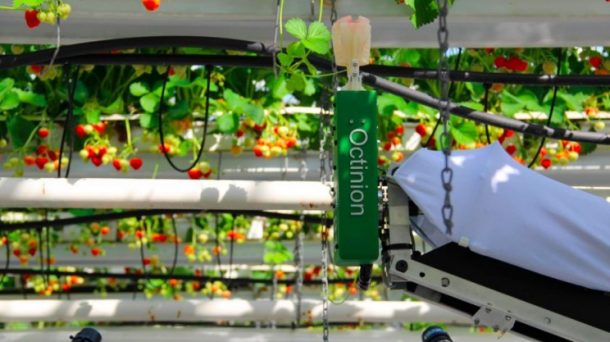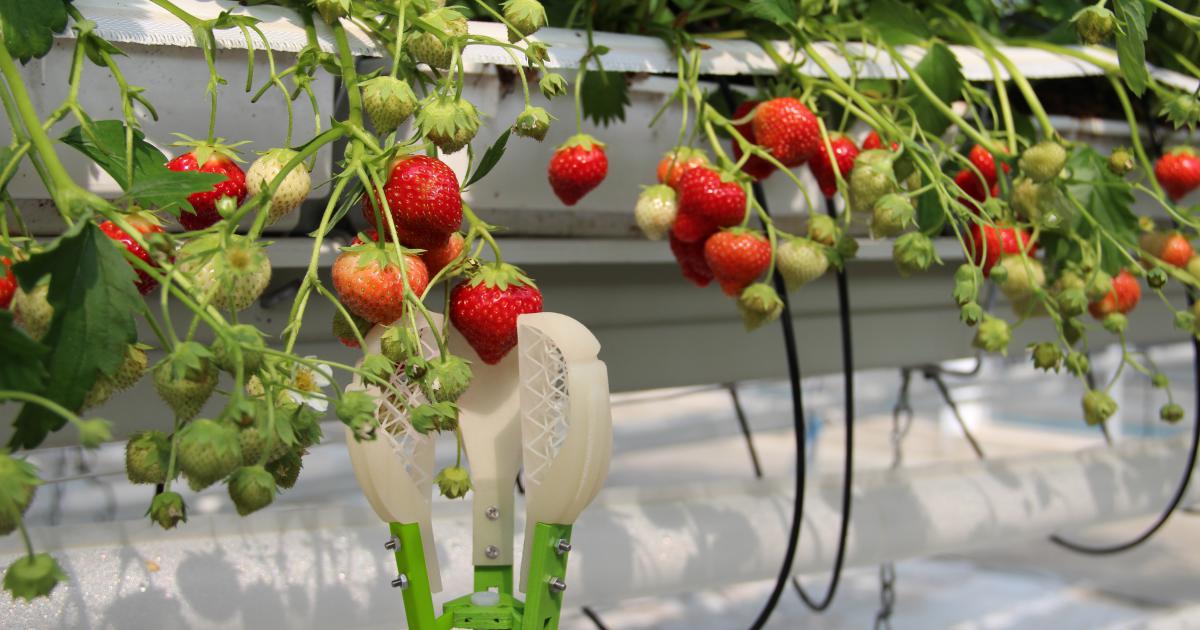We all complain about the quality of fresh food and the processed food that we consume, but most of us would not even imagine going through the hassle of growing our food. Forget growing food, just picking fruit as delicate as strawberries is an overload of work. As the immigration laws in the US are getting more strict, there is a shortage of strawberry pickers in the country. In this time of need, a Belgian Research and Development company popped in the solution with a strawberry picking robot.

The gentle Belgian robot can pluck strawberries from the bushes and place them in a basket delicately. It identifies the perfectly ripe strawberries using machine vision and plucks them using the 3D printed hand. It can also estimate how long it will take for the fruit to ripe. Developed by Octonion, the machine is meant to become the future of strawberry picking in all the berry picking regions that are facing a shortage of workers. Tom Coen, the CEO of the company, says:
“Agricultural labor, at this point, is not sustainable, in the sense that it’s often people who come a long way–a few thousand kilometers–do that work, and after the season they go back, or people come over as immigrants and do that kind of job to get started, and afterwards move on to other, better jobs.”

A human worker will pick fruit considerably quicker than the machine, but the cost is nearly the same.
“We’re a bit slower, but we’re already economically profitable because the cost per berry is similar,” says Coen.
The robot also meets all the criteria that a strawberry picker must follow like: not putting the fruit in the basket with the stem attached and not picking a green fruit. It achieves its target at quite a reasonable cost as well.
The strawberry industry is changing in many ways, moving from the traditional farming to growing the berries in trays in greenhouses. This helps to increase the yield while minimizing the water requirements. This is a step towards vertical farming systems and growing food in smaller spaces with lesser footprints. As we all wish to consume fresher food, there is a great need for better ecological farming methods.

“Something like 80% of the strawberry production in the U.S. comes from California, which means if you eat a strawberry in New York it has been on a truck for something like two days. So both ecologically and economically, that’s not really okay,” explains Coen.
Once the robot finishes testing in the laboratory strawberry patch, the company will employ it in real fields. Its capabilities may even be extended to other vegetables that are grown in greenhouses like peppers, tomatoes, and cucumbers.
In the next few years, the strawberry that enters our mouth may have never been touched by another human. Hygienic solution!


